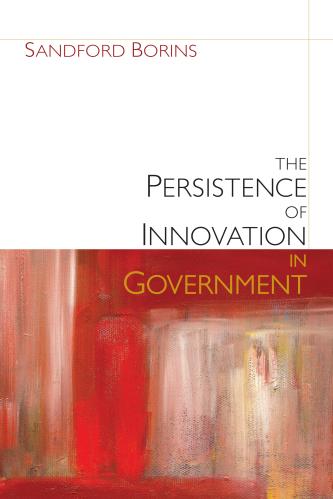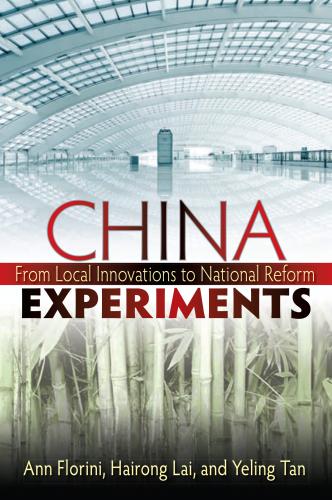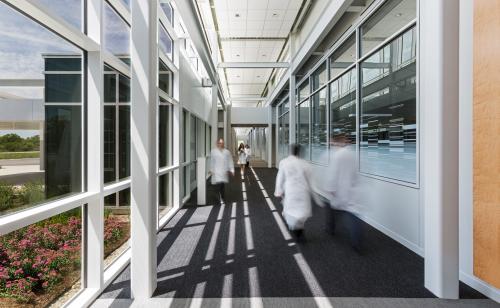For more information on the policy proposals in this piece, read the full report, Localizing the economic impact of research and development: Fifty policy proposals for the Trump administration and Congress
On Wednesday Dec. 14 President-elect Trump met with chief executive officers of leading tech companies to discuss how his administration can be supportive of America’s innovation economy. The meeting was a welcome first step to positioning the new administration as “pro-innovation,” but of course actions will speak louder than conversations.
The federal government invests over $140 billion each year in research and development, and these investments are the feedstock of next-generation technologies that drive economic growth. Economist Fred Block finds, for example, that since the 1990s over two-thirds of the most influential technologies were supported by federal research funding. But though the support comes from Washington, the new products and services are developed outside the Beltway and across the country.
This spatial level of innovation includes not just hot spots like Silicon Valley; Austin, Texas; or Boston, but also scores of communities like Chattanooga, Tenn.; Denver; Minneapolis; Mobile, Ala.; and Pittsburgh, which are intensively developing their innovation ecosystems at the regional level. Indeed, innovation occurs in all of America’s 435 Congressional Districts.
This dispersion matters because regional technology clusters engender concentrated knowledge flows and spillovers, workers with specialized skills, and dense supply chains that improve firm productivity. Many R&D-intensive firms benefit from proximity to innovation resources such as universities and federal laboratories, and this closeness produces myriad “ecosystem” benefits.
Thus, if America’s innovation economy is to function maximally, Washington needs to promulgate smart policies and initiatives that effectively work in concert at the city, regional, state, and national levels.
To help the Trump administration and Congress achieve this mission, in a new publication the Brookings Institution and The Information Technology and Innovation Foundation offer 50 policy actions to bolster America’s technology transfer, commercialization, and innovation capacity, from the local to the national level.
These recommendations include:
Strengthen innovation districts and regional technology clusters
- Prioritize innovation districts within federal R&D outlays
- Task federal laboratories with a local economic development mission
- Create off-campus “microlabs” to provide a front door to labs
- Support technology clusters by assessing and managing local-level federal R&D investments
- Assess federal real estate holdings and reallocate physical research assets to innovation districts
- Allow labs to repurpose a small portion of existing funds for timely local collaboration
- Standardize research partnership contracts within cities
- Create regional pre-competitive consortia through the National Institutes of Health (NIH) to address national health concerns
- Allow Department of Energy (DoE) labs to engage in non-federal funding partnerships that do not require DoE approval
- Dismantle funding silos to support regional collaboration
- Incentivize cross-purpose funding based on the economic strength of cities
- Expand the national Regional Innovation Program
- Support the innovation potential of rural areas
- Facilitate regional makerspaces
- Introduce an “Open Commercialization Infrastructure Act”
Bolster institutions supporting tech transfer, commercialization, and innovation
- Establish a core of 20 “manufacturing universities”
- Complete the buildout of Manufacturing USA to 45 Institutes of Manufacturing Innovation (IMIs)
- Create a National Engineering and Innovation Foundation
- Create an Office of Innovation Review within the Office of Management and Budget
- Create a network of acquisition-oriented Department of Defense labs based in regional technology clusters
- Establish manufacturing development facilities
- Establish a foundation for the national energy laboratories
Expand technology transfer and commercialization-related programs and investments
- Increase the importance of commercialization activities at federal labs/research institutes
- Allocate a share of federal funding to promote technology transfer and commercialization
- Develop a proof-of-concept, or “Phase Zero,” individual and institutional grant award program within major federal research agencies
- Fund pilot programs supporting experimental approaches to technology transfer and commercialization
- Support university-based technology accelerators/incubators to commercialize faculty and student research
- Allow a share of Small Business Innovation Research (SBIR) and Small Business Technology Transfer (STTR) awards to be used for commercialization activities
- Increase the allocation of federal agencies’ SBIR project budgets to commercialization activities
- Modify the criteria and composition of SBIR review panels to make commercialization potential a more prominent factor in funding decisions
- Encourage engagement of intermediary organizations in supporting the development of startups
- Expand the NSF I-Corps program to additional federal agencies
- Authorize and extend the Lab-Corps program
- Provide federal matching funds for state and regional technology transfer and commercialization efforts
- Incentivize universities to focus more on commercialization activities
- Establish stronger university entrepreneurship metrics
- Expand the collaborative R&D tax credit to spur research collaboration between industry and universities and labs
- Increase funding for cooperative industry/university research programs at universities
- Establish an International Patent Consortium
Promote high-growth, tech-based entrepreneurship
- Encourage student entrepreneurship
- Help nascent high-growth startups secure needed capital
- Establish an entrepreneur-in-residence program with NIH
- Implement immigration policies that advantage high-skill talent
- Implement a research investor’s visa
Stimulate private-sector innovation
- Implement innovation vouchers
- Incentivize “megafunds” around high-risk research and development
- Increase R&D tax credit generosity
- Ensure that small and medium-sized enterprises are familiar with available R&D tax credits
- Implement an innovation box to spur enterprises’ efforts to commercialize technologies
- Revise the tax code to support innovation by research-intensive, pre-revenue companies
The Brookings Institution is committed to quality, independence, and impact.
We are supported by a diverse array of funders. In line with our values and policies, each Brookings publication represents the sole views of its author(s).









Commentary
Trump and Congress should ‘localize’ the impact of federal R&D
December 19, 2016